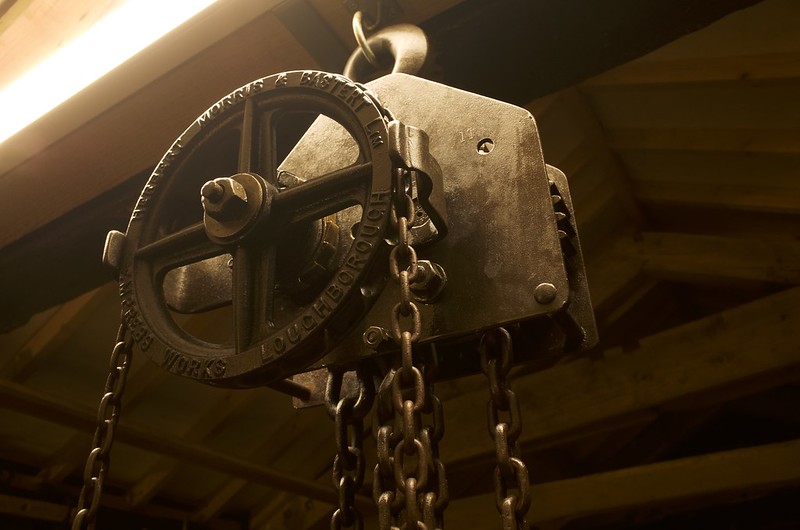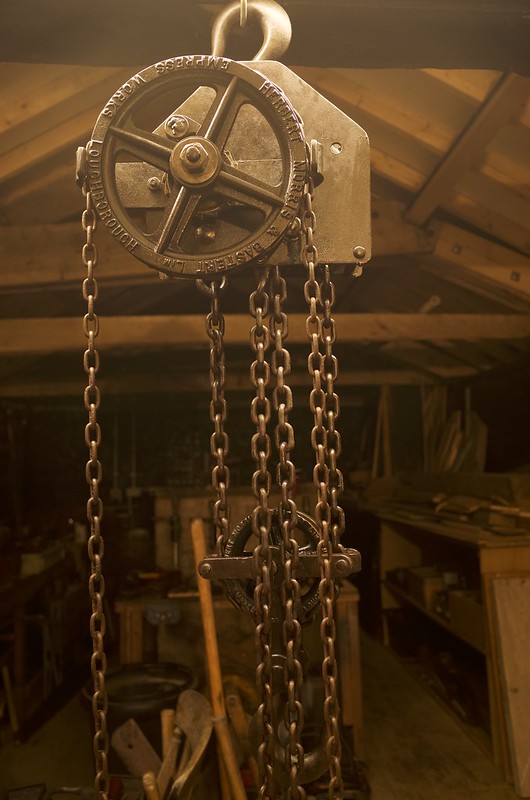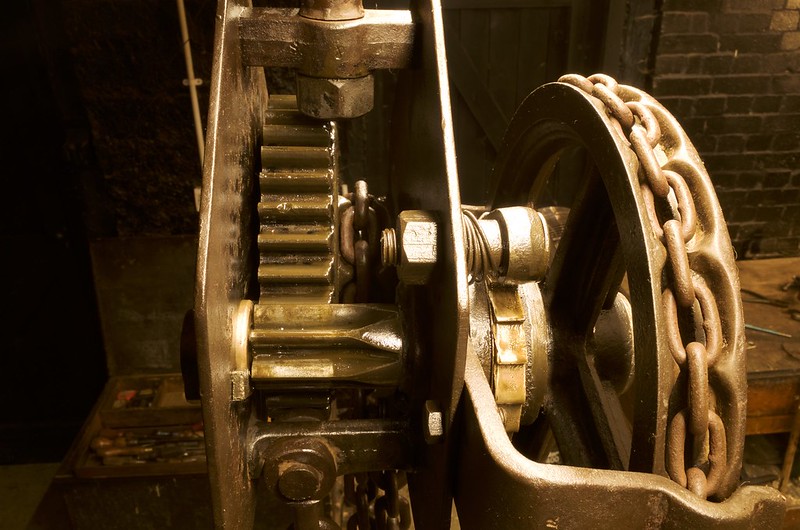Rhyolith
Established Member
I spotted this in a pile of various rotting items in an antiques centre's reclamation yard (such a waste... seriously). The lovely wheels caught my attention, and although I cannot use a chain hoist (not got a ceiling or frame to suitable to bare any serious weight) I thought it would like nice hung up somewhere once restored... beats being it being left to rot anyway :roll:
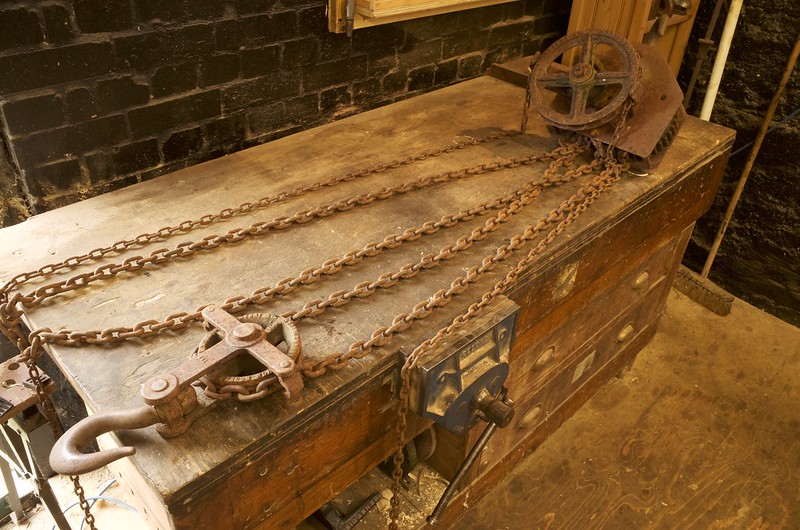 Herbert & Morris Chain Hoist by Rhyolith, on Flickr
Herbert & Morris Chain Hoist by Rhyolith, on Flickr
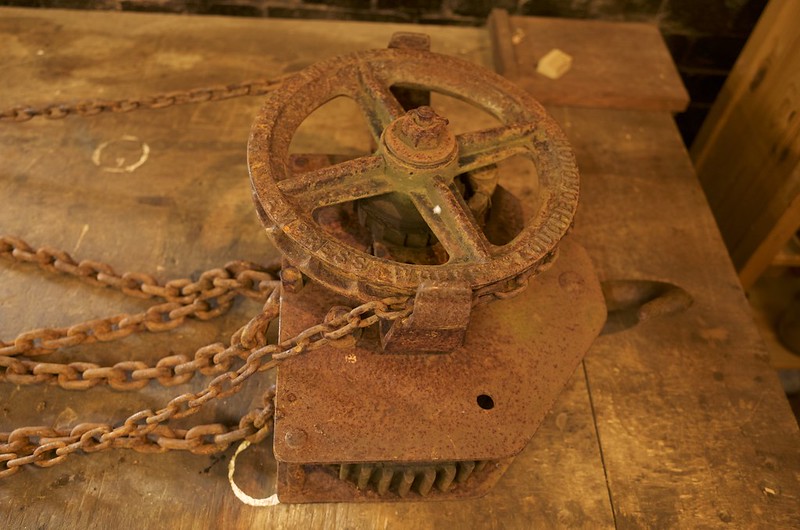 Herbert & Morris Chain Hoist by Rhyolith, on Flickr
Herbert & Morris Chain Hoist by Rhyolith, on Flickr
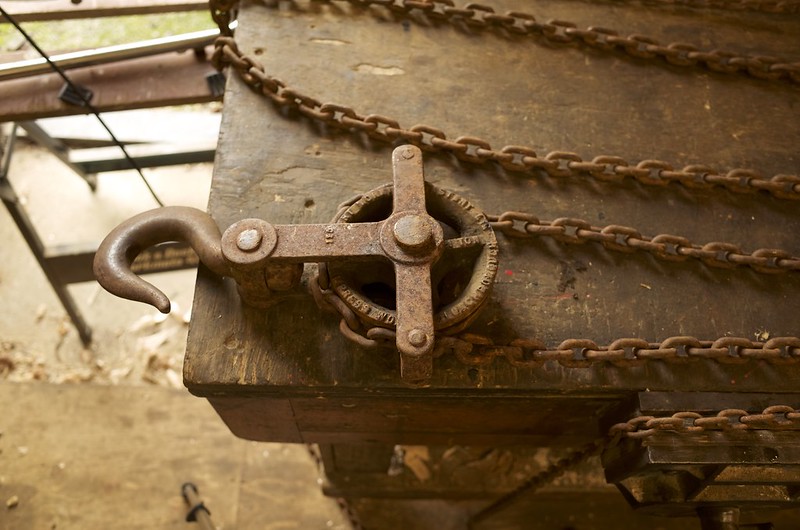 Herbert & Morris Chain Hoist by Rhyolith, on Flickr
Herbert & Morris Chain Hoist by Rhyolith, on Flickr
Its Marked on the the wheels: Herbert Morris & Bastert LTD Empress Works Loughborough. They come up with a google search, and apparently made cranes ranging from massive dockyard ones to (relatively) little things like this. The name of the company was changed in 1912 to just "Herbert Morris" and they moved from London to the "Empress Works" In loughbourgh in 1897, so that dates the hoist 1897 - 1912.
My sources for this:
- http://www.gracesguide.co.uk/Herbert_Morris
- http://discovery.nationalarchives.gov.u ... 55b04a49de
There are further markings on the hook wheel rating the hoist at "1 Ton".
I spent a good part of today dismantling it, most due to a handful of jammed parts... yay my favourite! (sarcasm :wink: ). Managed to avoid having to drill out anything though, which makes a nice change from the last few big rusty things I have worked on #-o
---------------
On a sidnote: I think it was bugbear whom recommended these locking Stanley adjustable spanners. Having recently got one after seeing it in home base (DIY store has a good hand tool in it :shock: ) this was its first real test... it really is a great design! Wish they made them in more sizes, could have done with a 15" today! The locking mechanism allows it to grip the nut far more tightly than a standard adjustable and makes releasing it quicker to, as you don't have to fiddle with the threaded adjuster once the spanner is set to the nut size. I would certainly highly recommend this to anyone who uses an adjustable regularly (not very often I recommend a modern tool!)
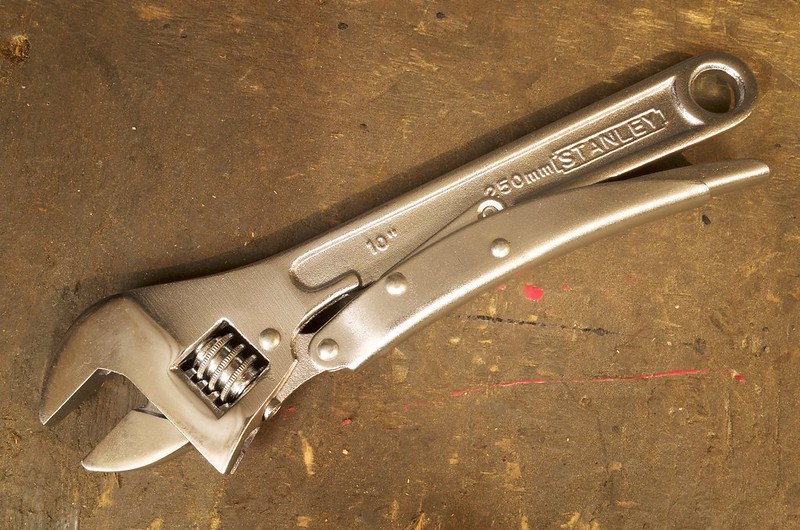 Stanley 10" Locking Adjustable Spanner (Locked) by Rhyolith, on Flickr
Stanley 10" Locking Adjustable Spanner (Locked) by Rhyolith, on Flickr
----------------
The hoist is apart now and I have started cleaning it up. I intend to wire brush all the crude off and then rub oil all over it, the result can be seen here in the hook which is the all I have done so far:
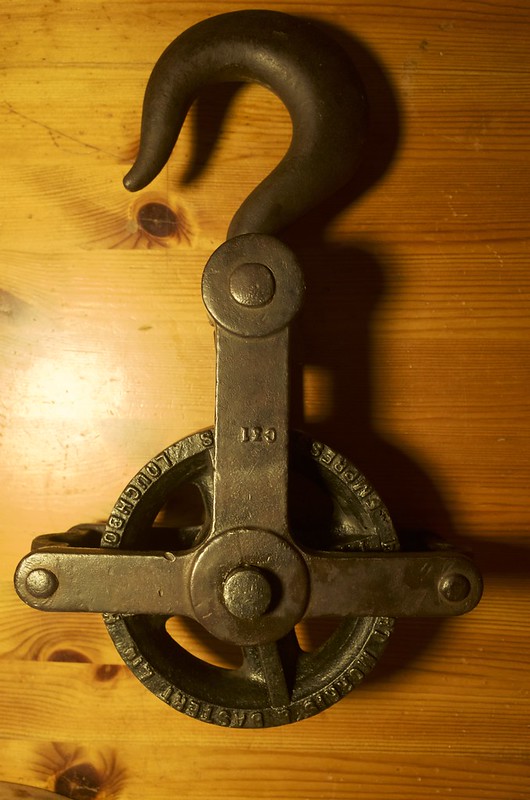 Herbert & Morris Chain Hoist (restored hook) by Rhyolith, on Flickr
Herbert & Morris Chain Hoist (restored hook) by Rhyolith, on Flickr
I have only briefly googled this so far, the company making real serious cranes is awesome on its own, but the possibility of this hoist being over 100 years old is even more so! I would raise my hopes too much yet though. Any information on the company or these hoists would be received with interest
 Herbert & Morris Chain Hoist by Rhyolith, on Flickr
Herbert & Morris Chain Hoist by Rhyolith, on Flickr  Herbert & Morris Chain Hoist by Rhyolith, on Flickr
Herbert & Morris Chain Hoist by Rhyolith, on Flickr Herbert & Morris Chain Hoist by Rhyolith, on Flickr
Herbert & Morris Chain Hoist by Rhyolith, on FlickrIts Marked on the the wheels: Herbert Morris & Bastert LTD Empress Works Loughborough. They come up with a google search, and apparently made cranes ranging from massive dockyard ones to (relatively) little things like this. The name of the company was changed in 1912 to just "Herbert Morris" and they moved from London to the "Empress Works" In loughbourgh in 1897, so that dates the hoist 1897 - 1912.
My sources for this:
- http://www.gracesguide.co.uk/Herbert_Morris
- http://discovery.nationalarchives.gov.u ... 55b04a49de
There are further markings on the hook wheel rating the hoist at "1 Ton".
I spent a good part of today dismantling it, most due to a handful of jammed parts... yay my favourite! (sarcasm :wink: ). Managed to avoid having to drill out anything though, which makes a nice change from the last few big rusty things I have worked on #-o
---------------
On a sidnote: I think it was bugbear whom recommended these locking Stanley adjustable spanners. Having recently got one after seeing it in home base (DIY store has a good hand tool in it :shock: ) this was its first real test... it really is a great design! Wish they made them in more sizes, could have done with a 15" today! The locking mechanism allows it to grip the nut far more tightly than a standard adjustable and makes releasing it quicker to, as you don't have to fiddle with the threaded adjuster once the spanner is set to the nut size. I would certainly highly recommend this to anyone who uses an adjustable regularly (not very often I recommend a modern tool!)
 Stanley 10" Locking Adjustable Spanner (Locked) by Rhyolith, on Flickr
Stanley 10" Locking Adjustable Spanner (Locked) by Rhyolith, on Flickr----------------
The hoist is apart now and I have started cleaning it up. I intend to wire brush all the crude off and then rub oil all over it, the result can be seen here in the hook which is the all I have done so far:
 Herbert & Morris Chain Hoist (restored hook) by Rhyolith, on Flickr
Herbert & Morris Chain Hoist (restored hook) by Rhyolith, on FlickrI have only briefly googled this so far, the company making real serious cranes is awesome on its own, but the possibility of this hoist being over 100 years old is even more so! I would raise my hopes too much yet though. Any information on the company or these hoists would be received with interest




